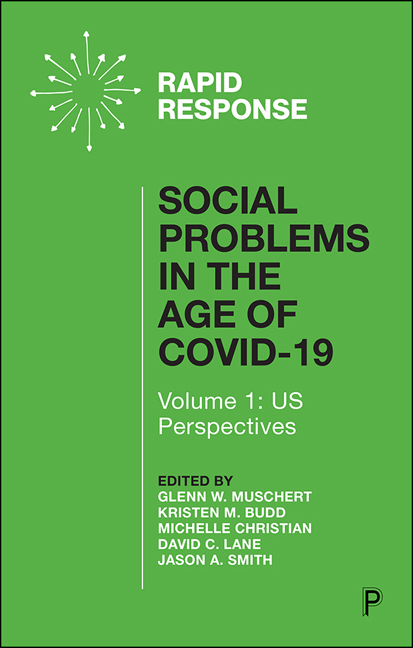4 - Essential Work and Unemployment in the United States
Published online by Cambridge University Press: 23 March 2021
Summary
The Problem
After a record-high stock market and only a 5.3% unemployment rate in February of 2020, the end of March would find a 30% stock market crash as the COVID-19 pandemic swept the United States. By April stay-at-home orders proliferated across the country and unemployment would spike to 14.7%, the highest rate since the Great Depression. While many suddenly found themselves out of work, between 49 and 62 million workers were estimated to be employed in “essential,” “life-sustaining,” or “critical infrastructure” industries. In this chapter I assess the impact of COVID-19 on workers in the United States, focusing on the circumstances of essential workers and the unemployed. As I will show, the health risks of COVID-19 intersect with economic risks linked to job status for many workers in the US.
While the impacts of COVID-19 are unique, they must be understood against the ongoing challenges that US workers face in a labor market characterized by low wages and the weak enforcement of labor protections. First, in 2019 an estimated 44% of the workforce was low-wage, with a median annual wage of $18,000. This is a trend that is expected to continue, as the Bureau of Labor Statistics projected even before the crisis that through 2024 two-thirds of new jobs would pay roughly $15 per hour or lower, with a third offering just over $10 per hour. The characteristics of modern low-wage jobs are worth noting. White workers are the largest demographic and thus hold the majority of low-wage jobs. At the same time, immigrants, people of color, and women are overrepresented in this wage band. Second, the policy landscape designed to protect and empower workers suffers from weak policies and poor enforcement. Today employers routinely violate employee rights in areas of wage regulation, union protection, employee classification, and health and safety.
For the majority of essential workers who must travel to a job site to perform their functions, the designation as “essential” implies increased health risks compared to those who can shelter in place or work remotely.
- Type
- Chapter
- Information
- Social Problems in the Age of COVID-19 Vol 1Volume 1: US Perspectives, pp. 36 - 48Publisher: Bristol University PressPrint publication year: 2020



